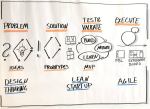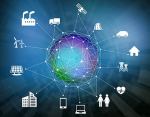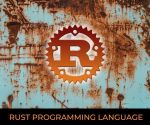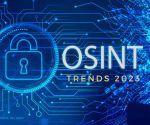“IBM defines Cognitive Computing as systems that learn at scale, reason with purpose and interact with humans naturally.”
2022 was a transformative year for Technological Innovation and Digital Transformation. The trend will continue as the pace of innovation and development of potentially disruptive emerging technologies exponentially increases every year. The question arises, what lies ahead for tech for us to learn and experience in 2023?
The world of computing has witnessed seismic advancements since the invention of the electronic calculator in the 1960s. The past few years in information processing have been especially transformational in our hyper-connected world. Futurist Ray Kurzweil said that mankind will be able to “expand the scope of our intelligence a billion-fold” and that “the power of computing doubles, on average, every two years. Recent breakthroughs in physics, nanotechnologies, and have brought us into a cognitive computing reality that we could not have imagined a decade ago.
What Is Cognitive Computing
Cognitive means “to think” and “computing” is processing using computers. Cognitive computing is making computers smart enough to think like humans. Cognitive computing is not one single technology, but it is a group of powerful technologies like Artificial Intelligence (AI), Machine Learning (ML) and Natural Language Processing (NLP).
It uses AI and ML to generate powerful systems which can sense, learn and respond. It plays a critical role in advancing and automating the core tenets of data management such as data modeling, data quality, data transformation and integration to ignite the applications and analytics required for the data.
Researchers are claiming that Cognitive Computing is more powerful than Artificial Intelligence as it is basically designed to solve problems like human beings do. It is basically designed to handle huge amounts of unstructured data and is useful in any field where massive amount of complex data needs to be analyzed and processed for example in finance, retail, education, supply chain, manufacturing, healthcare, aviation etc. but to understand unstructured data, we need more intelligent and smart systems and Cognitive Computing is one such effort.
Biological Computing
It is the advanced science of using biological products to perform actions that would traditionally be done using components like copper wire and fiber glass. Common biological components used in these studies include amino acids and DNA. Computational functions can be performed by manipulating natural chemical reactions found in these substances.
In the future biocomputers may be able to be stored on the DNA of living cells. This technology could store almost unlimited amounts of data and allow the biocomputers to perform complex calculations beyond our current capabilities.
Recently, researchers in Israel created a biological computer, constructed within a bacterial cell and capable of monitoring different substances in the environment. Currently, the computer identifies and reports on toxic and other materials. “We built a kind of biological computer in the living cells. In this computer, as in regular computers, circuits carry out complicated calculations,” said a researcher. Only here, these circuits are genetic, not electronic, and information are carried by proteins and not electrons.
It was also reported that researchers at the National Institute of Standards and Technology (NIST) may have developed long-lived biological computers that could potentially persist inside cells. They used nucleic acid RNA to build computers. In explaining the difference between classical computing and biological computing, Samuel Schaffter, NIST postdoctoral researcher stated that “the difference is, instead of coding with ones and zeroes, you write strings of A, T, C and G, which are the four chemical bases that make up DNA.”
Photonic/Optical Computing
Optical computing is a revolutionary technology that has the potential to change the way we think about computation. Unlike traditional computers, which use electrical signals to perform calculations, optical computing uses light. This allows for a much higher frequency of data processing, making it possible to run large and complex calculations at incredibly fast speeds.
one of the key technologies behind optical computing is photonic computing, which uses photons to perform calculations instead of electrons. this allows for a more efficient and synthetic approach to computation, as photons can be easily manipulated and controlled to perform a wide range of tasks.
Another key technology in the field of optical computing is integrated photonics. This refers to the integration of photonic components into a single, compact device, allowing for a more efficient and scalable approach to computation.
Overall, the use of these technologies has the potential to revolutionize the way we think about computation and data processing. With optical computing, we can solve problems that are currently beyond the capabilities of even the most advanced computers and do so at speeds that are unimaginable with today’s technologies.
Researchers at Aalto University have been developing light-based optical logic gates to meet the data processing and transfer demands of next-generation computing. Their new optical chirality logic gates ca>n operate ultrafast processing speeds – about a million times faster than existing technologies. Certainly, this is a computing area to watch in 2023 and beyond.
Chemical Computing
Will “Chemical Computers” become a new type of Artificial Intelligence that can work like human brains transmitting signals?
Another unconventional approach to computer processing is Chemical Computing. The ability of chemical systems to compute by acting as logic gates exists in nature. “We are already using chemical computers, because our brains and bodies employ communication via the diffusion of mediators, neuromodulators, hormones, etc.
A Chemical Computer, as of 2011, is an experimental computer that primarily uses chemicals instead of hardware to store and move data. While some hardware — such as a monitor — will still be required, many internal hardware pieces will no longer be needed for the computer to function. Such a computer works much like a brain, because data can move in all directions, instead of only in rigid paths. This process works by taking advantage of the Belousov-Zhabotinsky reaction, and data move according to bromine levels.
The benefits of Chemical Computing is ease of production and increased durability compared to traditional computer hardware. Another potential benefit is the ability to operate chemical computers without electricity. No viruses, autonomous regime of working, and extremely high efficiency.
It doesn’t look like we’ll be able to order a Chemical Computer for our home office anytime soon, but it’s another technology to put on our watch list for 2023 and beyond.
Quantum Computing
Civilization is now at the footstep of quantum computing. Quantum computing will be able to provide unprecedented computational speed with predictive analytics to solve problems. Quantum technology, that uses the unique characterizations of sub-atomic particles to process data inputs, will likely revolutionize everything from cybersecurity to real-time analytics. Quantum computing could be directed and augmented via artificial intelligence, operate in a 5G or 6G framework, support IoT, and catalyze materials science, biotech, genomics, and the Metaverse.
A market report sums up the promise and the race for supremacy of quantum technologies. “Advances in quantum computer design, fault-tolerant algorithms and new fabrication technologies are now transforming this “holy grail” technology into a realistic program poised to surpass traditional computation in some applications. With these new developments, the key question that companies are asking is not whether there will be a quantum computer, but who will build it and benefit from it.
In the next five years, we anticipate the emergence of metropolitan-scale entangled quantum networks for secure communication. These networks may also be used to create small clusters of quantum machines for advanced computing. We also believe that quantum sensors will be employed to significantly improve clocks, mapping, and intracellular sensing.
Going into 2023 we will continue to be in an era of quantum discovery. However, we certainly are on the pathway to a new quantum era. Quantum computing is still in a nascent stage, but we may arrive there sooner than we imagined. In the future, it will be the combination of classical, biological, chemical, and quantum computing paired with artificial intelligence that will shift the computing paradigms as we currently know them.
Final Thoughts
The societal, scientific, and economic impact of these 4 technologies will be harvested in the coming year and into the foreseeable future. I have just provided a glimpse of a few of their potential applications. It could be a very promising, likely disruptive, and probably a wild ride in the quest for actualizing new technologies of the Fourth Industrial Era.
🅐🅚🅖
Interested in Management, Design or Technology Consulting, contact anil.kg.26@gmail.com
Get updates and news on our social channels!
LATEST POSTS
- A Tale Of Two Frameworks: Spring Boot vs. Django
 “Spring Boot’s convention over configuration approach simplifies development, allowing developers… Read more: A Tale Of Two Frameworks: Spring Boot vs. Django
“Spring Boot’s convention over configuration approach simplifies development, allowing developers… Read more: A Tale Of Two Frameworks: Spring Boot vs. Django - Unleashing The Power Of Django
 “Django, akin to a Swiss Army knife, provides a comprehensive… Read more: Unleashing The Power Of Django
“Django, akin to a Swiss Army knife, provides a comprehensive… Read more: Unleashing The Power Of Django - Potential of Progressive Web Apps (PWAs)
 “PWAs are not just about technology; they are about creating… Read more: Potential of Progressive Web Apps (PWAs)
“PWAs are not just about technology; they are about creating… Read more: Potential of Progressive Web Apps (PWAs) - Unleashing The Power Of Spring Framework
 “Spring Framework simplifies enterprise Java development, but it does so… Read more: Unleashing The Power Of Spring Framework
“Spring Framework simplifies enterprise Java development, but it does so… Read more: Unleashing The Power Of Spring Framework - Key Trends Of OSINT In 2024
 “The future of OSINT lies in our ability to adapt… Read more: Key Trends Of OSINT In 2024
“The future of OSINT lies in our ability to adapt… Read more: Key Trends Of OSINT In 2024 - Can Google’s Carbon Language Replace C++?
 “While Carbon may excel in performance-critical domains, it cannot replace… Read more: Can Google’s Carbon Language Replace C++?
“While Carbon may excel in performance-critical domains, it cannot replace… Read more: Can Google’s Carbon Language Replace C++? - Integration of Design Thinking, Lean, and Agile
 “Innovation thrives when Design Thinking, Lean, and Agile converge, creating… Read more: Integration of Design Thinking, Lean, and Agile
“Innovation thrives when Design Thinking, Lean, and Agile converge, creating… Read more: Integration of Design Thinking, Lean, and Agile - Benefits Of Infrastructure as Code (IaC)
 “Infrastructure as Code is the single most important thing you… Read more: Benefits Of Infrastructure as Code (IaC)
“Infrastructure as Code is the single most important thing you… Read more: Benefits Of Infrastructure as Code (IaC) - Power Of Internet of Everything (IoE)
 “The true power of the Intebrnet of Everything lies not… Read more: Power Of Internet of Everything (IoE)
“The true power of the Intebrnet of Everything lies not… Read more: Power Of Internet of Everything (IoE) - How Is The Enterprise IoT Evolving?
 “IoT is not just about connecting things; it’s about connecting… Read more: How Is The Enterprise IoT Evolving?
“IoT is not just about connecting things; it’s about connecting… Read more: How Is The Enterprise IoT Evolving? - IT Pricing Strategy And Models
 “The art of pricing lies in finding the perfect balance… Read more: IT Pricing Strategy And Models
“The art of pricing lies in finding the perfect balance… Read more: IT Pricing Strategy And Models - What Is SYCL (“sickle”)?
 “SYCL provides a powerful and intuitive programming model that simplifies… Read more: What Is SYCL (“sickle”)?
“SYCL provides a powerful and intuitive programming model that simplifies… Read more: What Is SYCL (“sickle”)? - What Is A Data Lakehouse?
 “With a data lakehouse, organizations can break down data silos,… Read more: What Is A Data Lakehouse?
“With a data lakehouse, organizations can break down data silos,… Read more: What Is A Data Lakehouse? - 5G – The Future Of The Internet
 “5G is the next big step in the evolution of… Read more: 5G – The Future Of The Internet
“5G is the next big step in the evolution of… Read more: 5G – The Future Of The Internet - Ransomware Groups Are Switching To Rust
 “Rust is to Ransomware what a lockpick is to a… Read more: Ransomware Groups Are Switching To Rust
“Rust is to Ransomware what a lockpick is to a… Read more: Ransomware Groups Are Switching To Rust - Streaming Data Pipelines
 “A streaming data pipeline is like a river: it flows… Read more: Streaming Data Pipelines
“A streaming data pipeline is like a river: it flows… Read more: Streaming Data Pipelines - Why Rust Is Best?
 “Rust is a systems programming language that runs blazingly fast,… Read more: Why Rust Is Best?
“Rust is a systems programming language that runs blazingly fast,… Read more: Why Rust Is Best? - Database Sharding Explained
 “Database sharding is like breaking a large puzzle into smaller,… Read more: Database Sharding Explained
“Database sharding is like breaking a large puzzle into smaller,… Read more: Database Sharding Explained - Ambient Computing Will Be The Future Tech
 “Ambient computing creates a seamless technology-rich environment, but challenges in… Read more: Ambient Computing Will Be The Future Tech
“Ambient computing creates a seamless technology-rich environment, but challenges in… Read more: Ambient Computing Will Be The Future Tech - Key Trends Of OSINT In 2023
 “OSINT is not just a technique, it’s a mindset. It’s… Read more: Key Trends Of OSINT In 2023
“OSINT is not just a technique, it’s a mindset. It’s… Read more: Key Trends Of OSINT In 2023

